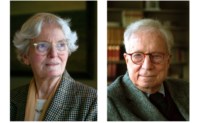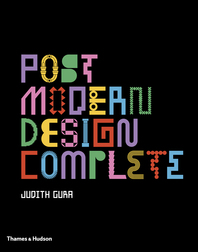Even logical transitions often come as a surprise. Take the news that the office of Venturi, Scott Brown and Associates has officially changed its name to VSBA, LLC to reflect the new ownership of the firm by long-time associate Daniel K. McCoubrey. Robert Venturi, 87, and Denise Scott Brown, 81, announced they are passing the baton to McCoubrey, president and principal of the new firm, and to Nancy Rogo Trainer, also a principal. While McCoubrey says the terms of ownership are confidential, he adds, "the timing seemed right. We finished the Curtis School of Music’s Lenfest Hall in the fall of 2011, and are completing additions and renovations for the Allentown Art Museum [in Pennsylvania], along with the renovation of the 19th-century Fay House at the Radcliffe Institute at Harvard University.” In addition he says, the fact that “the firm had gone from 18 people before the 2008 recession to about 10 today, makes the transition easier to deal with.” McCoubrey, a graduate of the University of Pennsylvania’s School of Architecture, has worked with Venturi and Scott Brown since 1981, and Trainer, also a Penn graduate, joined the firm in 1987.
As critic Martin Filler says about Venturi and Scott Brown in Makers of Modern Architecture, from Frank Lloyd Wright to Frank Gehry (2007), “Few present-day architects can equal the formidable array of skills they bring to their partnership: brilliant draftsmanship, a superb (if sometimes intentionally quirky) sense of proportion, keen understanding of the power of symbols, acute social insight, and an ability to apply the lessons of history meaningfully to contemporary purposes.”
Record asked Denise Scott Brown to comment on the transition and the legacy of the firm, which started off as Venturi and Short in 1960, became Venturi and Rauch in 1964, then Venturi Rauch and Scott Brown in 1980, before its most recent nomenclature in 1989.
SS: The news about the succession seems surprising. When did you decide to do it?
DSB: It was a long while coming. I began talking with Dan [McCoubrey] in the early 1990s. One of the things I talked about was getting smaller as we got older. We needed to come down to a manageable size for a new group to take over. But we also wanted to see certain projects through completion, and to meet our contractual commitments. The recession helped, but this is a new organization with new ownership and a new name. They are not us, and we are not them.
SS: What do the new principals [McCoubrey and Trainer] offer prospective clients?
DSB: They worked with us for over 25 years and they both bring with them great entrepreneurial and managerial leadership — as well as design ability.
SS: Are you going to have any role in the new firm?
DSB: I recently hurt my back and had to stay at home—and found I loved it—since I’m still writing and lecturing. I have kept out of their hair, although, I’ll go once a week to the office. I just wrote an introduction to a book on the writings of Josef Frank, an early 20th-century Austrian architect and designer who was personally responsible for the invention of the "Swedish Modern" furniture style.
SS: What about Venturi?
DSB: Bob is retired—he is not practicing and doesn’t want to talk or write. He has a view of retirement that means going to the office in the morning and then coming back to house. But he prefers a simple life, with no stress.
SS: What do you consider your firm’s legacy?
DSB: I would say communication as a function of architecture is a major one. We have also designed buildings to allow people to meet and interact easily in them. And we have used planning ideas from urban economics and transportation, particularly our understanding of the dynamic between streets and buildings—how streets generate urban settlement and activity patterns—as heuristics for the design of buildings.








Post a comment to this article
Report Abusive Comment